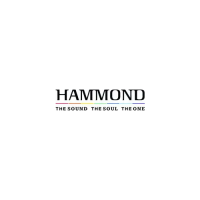*#1
Sk1
/
Sk2
Owner’s Manual
78
CONTROL
is mode is for setting the controller.
Please insure that the Expression Pedal and Foot Pedal are properly con-
nected before adjusting their settings, it is also possible to assign the oc-
tave buttons to other functions.
To locate this mode:
FOOT SWITCH
❶ FOOT SWITCH - DEVICE (G)
is is for selecting the equipment connected to the FOOT SWITCH jack.
FOOT SW: Foot Switch connected.
CU-1: Optional Leslie Mode Switch (CU-1) connected.
❷ FOOT SWITCH - TIP MODE (G)
is sets the Foot Switch function.
OFF: Does not function.
LESLIE S/F ALT, MOM, TRI:
Switches the Leslie E ect Slow/Fast/Stop.
At ALT, Fast / Slow or Stop (as set by the [STOP] button) is toggled every time the foot
switch is pressed. At TRI, it is switched to Stop when the foot switch is further held down
for longer than a second.
At MOM, it is switched to Fast only while the foot switch is held down. When released it
switches to Slow or Stop (as set by the [STOP] button).
GLIDE:
The pitch bends while the foot switch is pressed. The glide interval and glide speed is
determined by the GLIDE - RANGE and GLIDE - TIME settings.
PATCH FWD, REV:
Switches the Patch Forward or Reverse.
FAVORITE FWD, REV:
Switches the Favorite Forward or Reverse.
SPRING:
This generates the sound of the spring reverb being shaken.
DELAY TIME:
This is for setting the delay time (P. 101) of the Reverb, at the interval of tapping the foot
switch. The delay sound goes out, while the foot switch is held down.
MUSIC START:
Controls the Start/Stop of the music player.
or, touch the [CONTROL] button.
See “Function mode” (P. 68) for operation details.
TIP AND RING
The typical stereo plug, there are 3 metal parts.
The end is called the “Tip”, the middle portion is
the “Ring”. The part on the cord side is called the
“Sleeve”.
This keyboard requires a foot switch that uses a
Stereo Jack. Two Mono-Jack foot switches may
be used, and can have discrete functions, if a Left/
Right stereo splitter is used.
Tip
Ring
Sleeve
SPRING REVERB
The Hammond Organ company actually invented
the spring reverb for its organs in the 1940’s. The
e ect was obtained with a length of spring and a
few pickups. If the spring was disturbed, it would
make a large crashing noise that was usually con-
sidered a nuisance, but sometimes was used as a
program sound e ect. The Reverb here is digital,
but the “crash” e ect is re-created here.
MENU/
EXIT
ENTER
❶ ❷❸
❹❺ ❻❼❽ ❾❿
⓬⓭
⓮⓯⓰ ⓱
⓲⓳⓴
⓫

